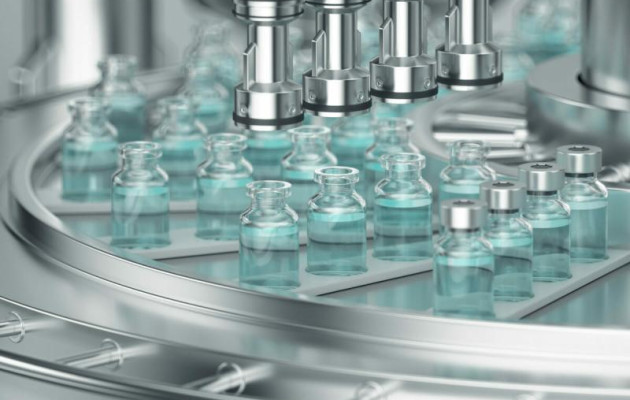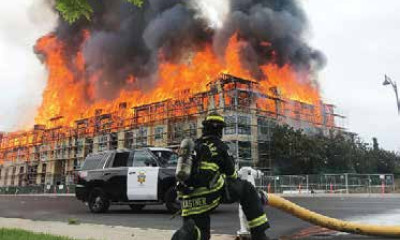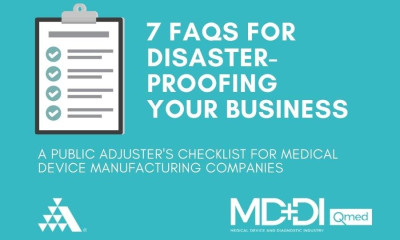Biotechnology News Magazine
July 20, 2022 - Biotechnology News Magazine
Article written by: Steve Severaid, The Greenspan Co./Adjusters International
Protecting Biotechnology Manufacturing Facilities through Pre-Disaster Insurance Planning
Constantly evolving supply chains and increasing extreme weather events have imposed significant risks for many large manufacturing facilities. When it comes to the biotechnology industry, there are additional obstacles associated with the complexities of the manufacturing process and its advanced equipment, sensitive inventory.
For most companies operating in this space and serving major clients, it is crucial that operations remain uninterrupted in the event of an emergency. As business interruption insurance claims are becoming more and more common, here are a few things manufacturers should consider to protect their assets and ease recovery in the event of a disaster.
1. Review your Business Insurance Policy Regularly
One simple, yet vital step in disaster-proofing your business is to secure adequate insurance coverage and keep it up to date. This ensures that every step of the intricate biopharmaceutical manufacturing chain is covered: from suppliers and vendors to advanced production and staff.
A good rule of thumb is to review your policy twice a year. Policyholders can review the coverage with their insurance agent or broker, or a public adjuster who can help identify any potential pitfalls. By keeping the coverage up to date, any new equipment or building upgrades will be reflected in your policy, building code coverage is kept current, loss of revenue is covered, and the policy can be amended as needed. Without an up-to-date policy, the business underinsured by as much as 25 percent due to economic inflation and the rise in construction costs.
The last thing you want is to be caught underinsured. Securing proper insurance coverage is the most effective way to protect your company’s financial well-being in the event disaster strikes.
2. Understand Risks and Coverages
It is also important that business owners understand their policy and know how to utilize their coverage. Infrastructure, buildings, and equipment are typically covered under a standard commercial business insurance policy, while other important aspects of the business may be excluded or overlooked.
One part of the policy to be aware of is the coinsurance clause. Coinsurance is frequently found in commercial policies and requires policyholders to carry an amount of insurance equal to a specified percentage of your company’s value. If the policyholder does not carry the specified amount, they become a co-insurer, or joint insurer, alongside the insurance company. Many business owners are not aware of the advantages and disadvantages of the coinsurance clause. Failing to understand and comply with coinsurance provisions can be the difference in a business surviving or folding following a disaster.
Another coverage manufacturers should consider is dependent properties coverage. This coverage protects your loss of revenue or your increased costs if a third-party supplier is unable to provide a component due to a business interruption or disaster. If your business relies on one or more third-party suppliers for your manufacturing needs, you should assess whether or not you want to include this coverage.
Building code coverages, also known as law and ordinance coverage, is an endorsement that can often be overlooked within an insurance policy. Yet, it can pose significant financial burden to the policyholder during the rebuilding process after a loss. For example, if an older building sustained severe damage and needed to be rebuilt or repaired, the new building would be required to adhere to the current building codes. Without proper building code coverage, the policyholder would be left to cover the costly expenses of complying to the local government’s regulations.
Business interruption insurance under your commercial insurance coverage protects against lost income and provides funds for extra expenses if a disaster stalls operations. However, business interruption often excludes ordinary payroll, i.e., expenses for all employees with the exception of those deemed as key employees. Although ordinary payroll coverage can substantially increase premiums, companies may want to reconsider adding this coverage given the persistent shortages in the current labor market. By being able to retain your staff during business interruption, you can avoid having to deal with personnel shortages when you are ready to restart production.
3. Assemble your Recovery Team
After a disaster, restarting business operations and retaining clients become the business owner’s top priority. Filing insurance claims and having to negotiate with the insurance carrier during this time not only adds to the stress, but also distracts you from focusing on the most important things.
This is why assembling a team of trusted professionals before disaster strikes can save the company time, money, and stress. At the very least, your ideal recovery team should include legal counsel, an accountant, and a public adjuster. Public adjusters are insurance professionals who work exclusively for the policyholder – not the insurance company – to prepare, negotiate, and settle property loss insurance claims.
4. Post Disaster Recovery
You always have numerous clients relying on your goods. Keeping relationships in good standing is vital to survival when operations are ceased. Using your company’s business interruption insurance, you can consider a few different options for continuing operations. One of them is to resume operations by moving the business to a temporary location. Additionally, a manufacturer can purchase a similar item from a competitor to fulfill orders and retain clients. Your public adjuster can help orchestrate both methods and negotiate with the insurance company to make sure these extra expenses are covered.
There is also an option to use an expedited construction process to speed up the recovery or rebuilding of the damaged facilities allowing the company to restart production sooner. While this can be a more expensive route to take, with the help of a public adjuster, the company can prove that it would cost the insurance company more to maintain a temporary location than it would to expedite the construction.
Recovering after a disaster is stressful, and it only takes one disruption to endanger a company’s financial well-being. Without proper planning, navigating the complicated process of settling insurance claims while trying to restart or maintain operations can be a monumental task for a business owner to tackle alone. This is why in addition to obtaining proper insurance coverage and understanding the potential pitfalls, assembling your post-disaster recovery team can make the difference between resuming operations quickly or shuttering the doors for good.
Full article: biomag1.com/manufacturing-business-disaster-proof/


 Editor’s Note: Steve Severaid is President of
Editor’s Note: Steve Severaid is President of 




